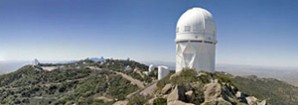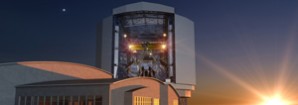Spotlight
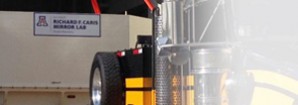
Arizona Stadium Is More Than A Home To Football
ESPN reports on an interesting aspect of the UA Football Stadium, namely, the Richard F Caris Mirror Lab of Steward Observatory. This lab has made, among others, the mirrors for the 6.5m MMT, the twin 8.4m LBT, the two 6.5m Magellan Telescopes, the LSST, and 3 (soon 4) mirrors for the Giant Magellan Telescope. You can find the article HERE and the Mirror Lab website HERE.

How the LMC Teaches Us About the Gaseous Halo of the Milky Way
The most massive satellite galaxy of the Milky Way, the Large Magellanic Cloud (LMC), is currently speeding away from our Galaxy at a speed of ~716 thousand miles per hour after recently reaching its closest approach to the Milky Way. The proximity of the LMC from us (a mere 160 thousand light years) provides us with a unique opportunity to use this galaxy to probe the distribution of gas that surrounds our Galaxy. This gas is likely the main source of fresh material to feed star formation in the Milky Way disk. Because the LMC is moving at such high speeds, the gas through which it is moving leaves a prominent mark on the LMC's disk structure. Dr. Munier Salem at Columbia University and Dr. Gurtina Besla at U. Arizona have modeled this process using high resolution computer simulations, allowing them to make a precise estimate for the density of this gas and the total amount of gas that may surround our Galaxy. the figure shows a simulation of the LMC's gas disk undergoing ram pressure stripping. The white circle indicates the original size of the LMC's disk prior to stripping and color coding represents gas density. The arrow indicates the direction of the wind caused by the motion of the LMC through the gaseous material that surrounds our Milky Way.
Scientific American has written a short article about this work, found HERE.
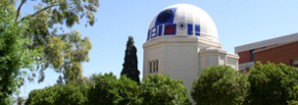
Welcome and Welcome Back, Astronomy Majors
Welcome to the Astronomy Major and Minor at Steward Observatory.
UPCOMING: Come to the Majors Meeting starting at 3:30pm on September 4th at Steward Observatory [courtyard and N210]. There are treats. Meet your fellow majors and members of the Astronomy department.
NEW: Frequently Asked [Astronomy Major] Questions HERE.
Our website contains much useful information, and information specific to majors can be foundHERE. Information specific to minors can be found HERE. Minors can also contact Dr. Tom Fleming (taf@as.arizona.edu). You might also find our facebook site useful/interesting.
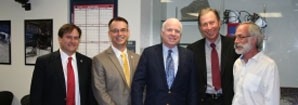
Sen. McCain Tours Mirror Lab, Explores UA Space Sciences
U.S. Sen. John McCain recently toured the UA's Richard F. Caris Mirror Lab and heard about the University's cutting-edge work in space sciences.
Pages

For Public
Public events include our Monday Night Lecture Series, world-reknowned Astronomy Camp and Mt Lemmon Sky Center.

For Students
A good place to start if you want to become an undergrad major or grad student, or need to find our schedule of classes.

For Scientists
Find telescopes and instruments, telescope time applications, staff and mountain contacts, and faculty and staff scientific interests.



